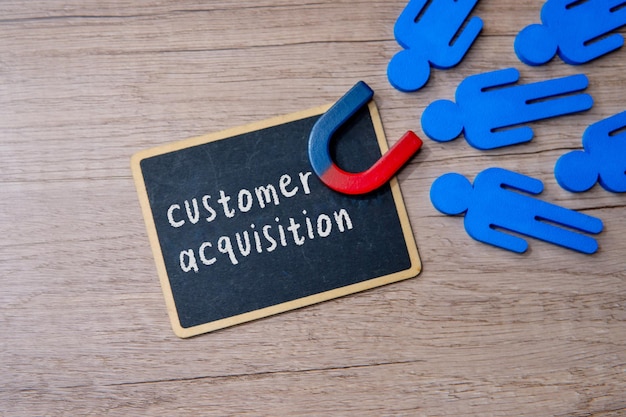Unveiling the Secrets of Promotional Strategies: Boosting Sales Performance and Customer Engagement
In today’s competitive business landscape, understanding and implementing effective promotional strategies can be the key to boosting sales performance and enhancing customer engagement. By exploring various marketing tactics such as discount programs, loyalty programs, and social media campaigns, businesses can significantly influence consumer behavior and foster brand loyalty. This blog post will serve as a guide for marketing professionals, business owners, and sales teams looking to refine their approach and drive revenue growth. With a focus on practical applications and real-world examples, we aim to equip you with the knowledge needed to tailor promotional efforts that resonate with your audience. Join us as we examine how these strategies can transform your marketing efforts into powerful tools for success. For more insights, check out these customer engagement strategies.
Understanding Promotional Strategies
Promotional strategies form the backbone of any successful marketing plan. They are essential for engaging customers and driving sales. By examining various approaches such as discount programs, loyalty incentives, and social media engagement, businesses can effectively tailor their strategies to meet specific objectives. Understanding these strategies is crucial for maximizing their impact and achieving desired outcomes.
Discount Programs Impact
Discount programs are a common promotional tool aimed at boosting sales. Discounts can take many forms, including price reductions, buy-one-get-one-free offers, and seasonal sales. These strategies often lead to increased consumer interest and higher sales volumes.
Real-world examples show that businesses using discount programs can attract price-sensitive customers. For instance, during holiday seasons, retailers often see a surge in sales due to aggressive discount offerings. This tactic not only increases short-term revenue but also introduces new customers to the brand.
However, over-reliance on discounts can diminish perceived value. Customers might start expecting discounts regularly, which can erode profitability. To mitigate this, businesses should use discounts strategically, ensuring they align with broader marketing goals.
Loyalty Programs Influence
Loyalty programs are designed to reward repeat customers. They encourage continued patronage by offering incentives such as points, discounts, or exclusive access. Loyalty programs are effective in building customer relationships and enhancing brand loyalty.
A case study of a coffee chain revealed that their loyalty program significantly increased customer retention. Participants frequently visited the store to earn points, leading to higher overall sales. The program also provided valuable data on consumer preferences, allowing for targeted marketing.
To create a successful loyalty program, businesses should focus on personalization. Tailoring rewards to individual customer preferences can lead to higher engagement and satisfaction, fostering long-term loyalty.
Social Media Campaigns Effectiveness
Social media campaigns are an integral part of modern marketing strategies. These campaigns leverage platforms like Facebook, Instagram, and Twitter to engage with a broad audience. Social media enables real-time interaction, allowing brands to connect with consumers on a personal level.
Companies like Wendy’s have effectively used social media to enhance brand presence. By engaging customers through witty tweets and interactive content, Wendy’s has built a strong online community. This engagement translates into increased brand awareness and customer loyalty.
To maximize social media impact, businesses should focus on creating engaging content that resonates with their audience. Consistent posting and active interaction with followers are crucial for maintaining interest and fostering community engagement.
Enhancing Sales Performance

Improving sales performance involves understanding and influencing consumer behavior. By analyzing buying patterns and preferences, businesses can develop strategies that effectively enhance sales. This section explores key factors that contribute to successful sales performance.
Consumer Behavior Insights
Consumer behavior is a critical component of sales strategy. Understanding what motivates customers to purchase can guide marketing efforts and drive sales growth. Factors such as price sensitivity, brand loyalty, and product preferences play a significant role in shaping buying decisions.
A study found that personalized marketing messages significantly influence purchasing behavior. Personalization increases relevance, making customers more likely to engage with the brand. By analyzing purchase history and browsing data, businesses can tailor messages to individual needs.
To leverage consumer behavior insights, businesses should invest in data analytics. This allows for precise targeting and the development of campaigns that resonate with specific customer segments.
Boosting Brand Loyalty
Brand loyalty is essential for sustaining long-term sales growth. Loyal customers not only provide consistent revenue but also act as brand advocates. Building strong relationships through exceptional service and personalized experiences is crucial for fostering loyalty.
For example, Apple’s brand loyalty is attributed to its focus on quality and customer experience. By consistently delivering innovative products and maintaining a strong customer relationship, Apple has cultivated a dedicated customer base.
To boost brand loyalty, businesses should focus on delivering consistent value and maintaining open communication with customers. This includes responding to feedback and adapting to evolving customer needs.
Driving Revenue Growth
Revenue growth is achieved by implementing strategies that enhance customer acquisition and retention. By focusing on expanding market reach and improving customer lifetime value, businesses can drive sustainable revenue growth.
Successful companies often reinvest in product development and market expansion. This approach not only increases market share but also solidifies the brand’s position. Amazon’s growth strategy exemplifies this, as the company continuously explores new markets and innovations.
To drive revenue growth, businesses should diversify their offerings and explore new market opportunities. This includes expanding product lines and targeting new customer segments.
Improving Customer Engagement

Customer engagement is critical for building lasting relationships and enhancing sales performance. By tailoring marketing tactics and measuring engagement success, businesses can create meaningful interactions with customers. This section explores strategies for improving customer engagement.
Tailoring Marketing Tactics
Tailoring marketing tactics involves customizing approaches to meet specific customer needs. By understanding customer preferences and behaviors, businesses can develop strategies that effectively engage their audience.
Real-world examples highlight the importance of personalized marketing. Brands that tailor messages to individual customer preferences see higher engagement rates. Personalization creates a sense of connection, increasing the likelihood of customer interaction.
To tailor marketing tactics, businesses should focus on gathering and analyzing customer data. This allows for the development of targeted campaigns that resonate with specific audience segments.
Measuring Engagement Success
Measuring engagement success is essential for evaluating the effectiveness of marketing strategies. By tracking key metrics, businesses can assess the impact of their efforts and make informed decisions.
Key metrics for measuring engagement include conversion rates, customer feedback, and social media interactions. These indicators provide valuable insights into customer preferences and behavior. By regularly analyzing these metrics, businesses can refine their strategies for better results.
For actionable advice on measuring engagement, businesses should set clear objectives and regularly review performance data. This ensures strategies remain aligned with business goals and customer expectations.
Strategies for Long-term Relationships
Building long-term relationships with customers ensures sustained business success. By focusing on customer satisfaction and loyalty, businesses can create a loyal customer base that supports sustained growth.
Successful brands prioritize exceptional customer service and personalized experiences. By continuously engaging with customers and addressing their needs, they foster strong relationships that withstand market challenges.
To build long-term relationships, businesses should focus on delivering consistent value and maintaining open communication. This includes responding to feedback, adapting to customer needs, and acknowledging customer loyalty.
For more insights on customer engagement strategies, explore resources from Hoppier, Emotive, Highspot, and GoTo.

